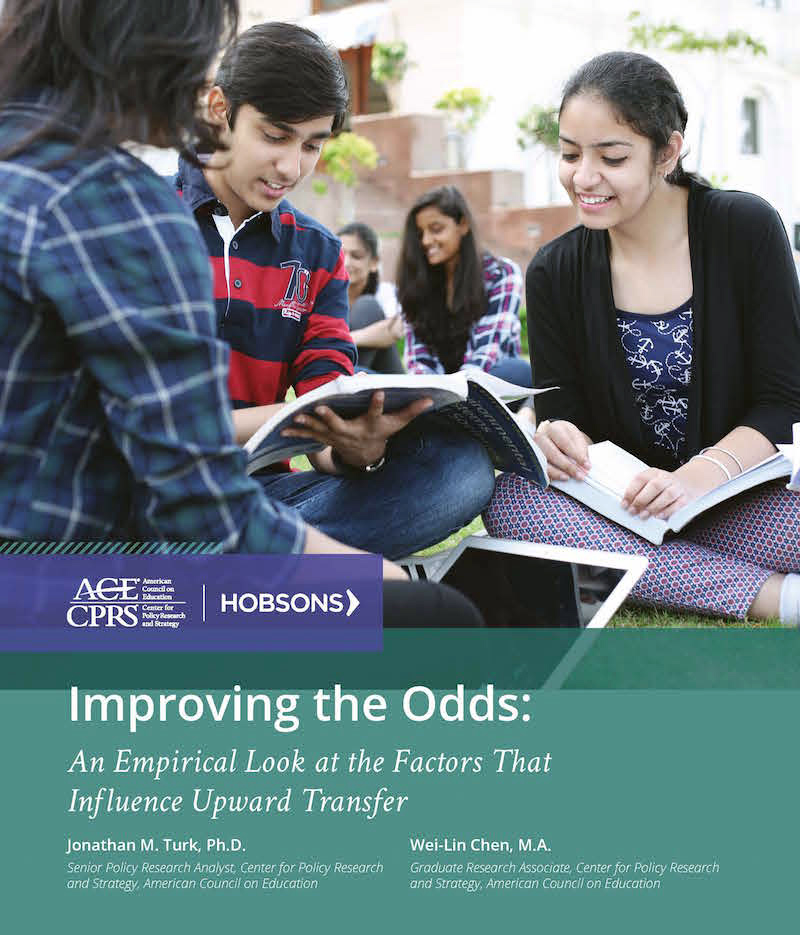By Jonathan Turk
 Community colleges are among the most democratic institutions in the United States. Each year, these colleges ensure millions of students, many of whom are first-generation, low-income, or racial/ethnic minorities, have access to the keys of upward mobility: a postsecondary education. And while access to a high-quality and affordable college education is essential, access means little if students are unable to meet their educational goals once they arrive. This fact has helped shift the higher education public policy agenda toward one increasingly focused on completion.
Community colleges are among the most democratic institutions in the United States. Each year, these colleges ensure millions of students, many of whom are first-generation, low-income, or racial/ethnic minorities, have access to the keys of upward mobility: a postsecondary education. And while access to a high-quality and affordable college education is essential, access means little if students are unable to meet their educational goals once they arrive. This fact has helped shift the higher education public policy agenda toward one increasingly focused on completion.
But what does completion mean for such a diverse student population? For some it means earning an associate or bachelor’s degree. But for others, it means completing a certificate, a couple of courses, or transferring from a two-year to a four-year institution. For many students, completion is a combination of many of these goals. And while colleges and universities have made great strides to improve access, more work is needed in order to improve completion rates for increasingly diverse study body. With this mind and in partnership with our colleagues at Hobsons, ACE’s Center for Policy Research and Strategy (CPRS) is releasing a series of three research briefs focused on community college student outcomes.
In the first brief published last week, Improving the Odds: An Empirical Look at the Factors That Influence Upward Transfer, my co-author and I explore upward transfer—the movement from a community college to a four-year institution—for students who matriculate soon after high school. While it is true that post-traditional students make up the majority of community college enrollees, we chose to focus on the direct from high school subpopulation for two reasons.
First, with more and more states implementing or considering free community college plans as both a way to increase sub-baccalaureate and baccalaureate attainment for graduating high school seniors, more research is needed to better identify and eliminate the barriers to completion for this population of students. Second, the rich and robust data available through the Education Longitudinal Study of 2002 (ELS) allowed for an in-depth look into the relationships between high school academic and institutional characteristics, as well as college enrollment and demographic factors on upward transfer rates.
Applying a multilevel logistic regression model to the question of what factors influence upward transfer led us to a number of important findings. Here are some of the most interesting results (to take a look at the full set of findings, download the paper here):
- Students who participated in dual-enrollment courses, on average were two-and-a-half times more likely to transfer to a four-year institution than students who did not.
- Taking AP/IB courses significantly increased the odds of upward transfer.
- Students who waited longer than three months after high school to enroll in community college saw their odds of transferring reduced by 43 percent.
- Claiming a major while enrolled in community college increased the odds of upward transfer by 53 percent.
- Participation in extracurricular activities while enrolled at community college more than doubled the odds that a student would go on to transfer to a four-year institution.
These findings show that that decisions students and their families make while still in high school and when they first enroll in community college make a big difference on their chances of transferring on to a four-year college or university. They also suggest a number of actionable steps educators and policymakers can take to improve upward transfer rates. Based on our findings and drawing from a strong and growing body of research on community college student success, we outlined five key strategies to improve upward transfer rates:
Ensure that all students have access to rigorous high school curricula. In addition to making sure students have access to opportunities to earn college credit while in high school, schools and higher education systems will need to work cooperatively to better define what it means to be college ready. Policymakers will need to consider ways to provide needed financial resources for schools be able to expand their offerings.
Expand access to and strengthen college and career counseling in high school. On average, one school counselor is expected to serve close to 500 students or twice the recommend student-to-counselor ratio. School counselors are often needed to fulfill a multitude of administrative responsibilities, thus leaving little time to provide thorough college and career counseling. Policymakers should offer additional resources to help school districts lower their student-to-counselor ratios. Furthermore, school districts—on their own or in partnership with local colleges or community groups—should offer pre-college counseling workshops to students and their families.
Ensure that students have access to financial aid and that existing financial aid systems better serve students. Federal policymakers must support and grow the Pell Grant program to ensure low-income students can access higher education. Policymakers will also need to simplify the Free Application for Federal Student Aid (FASFA), which in its current form, acts as a significant barrier to students and their families. Colleges and universities should consider conducting reviews of their financial aid and counseling systems to ensure they are meeting the needs of transfer students.
Reexamine academic advising programs to ensure that they are serving the needs of community college students. More community colleges should adopt the guided pathways model in order to help improve student completion rates. Four-year institutions should undergo reviews of their academic advising enterprise to insure they are equipped to meet the needs of transfer students.
Reduce barriers to transfer by developing comprehensive transfer and articulation policies. State policymakers and higher education systems should continue to work together in order to create and promote clear and navigable transfer policies. Four-year institutions should work to establish strong transfer-oriented cultures—those that recognize the unique value transfer students bring to the campus community.
In this research and through our recommendations, we set out to draw more attention to the strategies that high school educators, college and university faculty and staff, and policymakers will need to implement in order to reduce barriers to upward transfer. Each stakeholder has a unique role to play to ensure that students have the greatest chance of achieving their educational goals.
To help further facilitate the exchange of ideas, ACE and our partners at Hobsons hosted a webinar on May 18 to discuss the full findings and detailed recommendations from this report. Joining the discussion was my co-author Wei-Len Chen of ACE/CPRS; David Schuler, superintendent of the Township High School District 214 in Illinois and the 2015-16 president of the American Association of School Administrators; and Ellen Wagner, vice president of research at Hobsons. To watch a recording of the full webinar, click here.
If you have any questions or comments about this blog post, please contact us.



